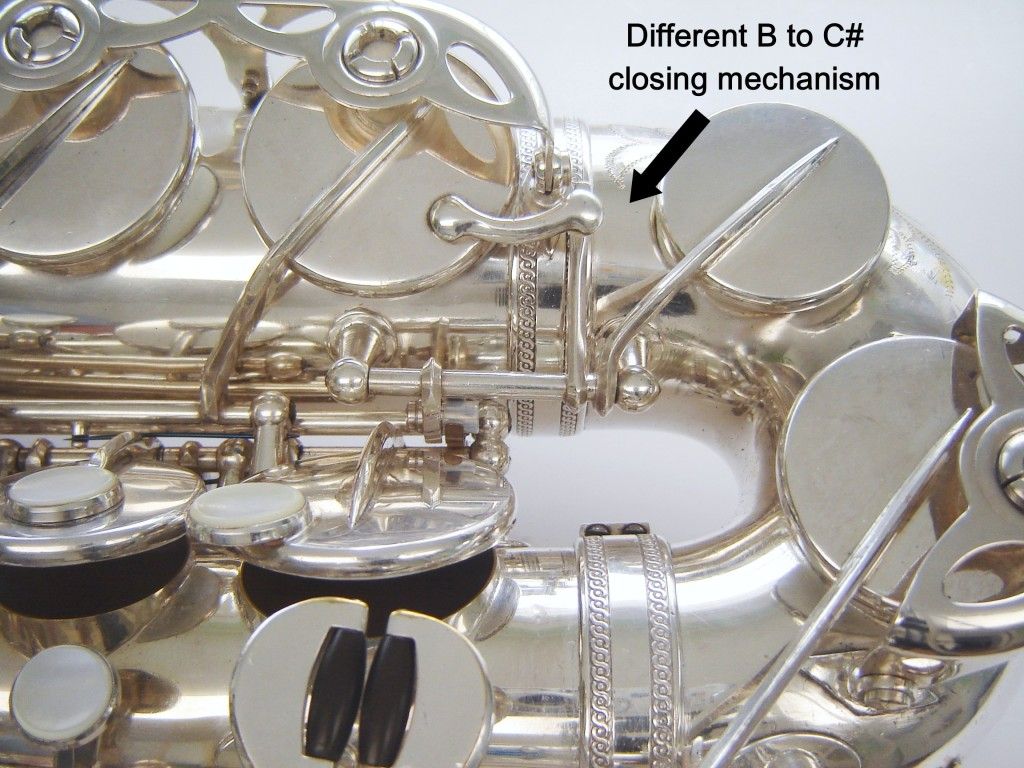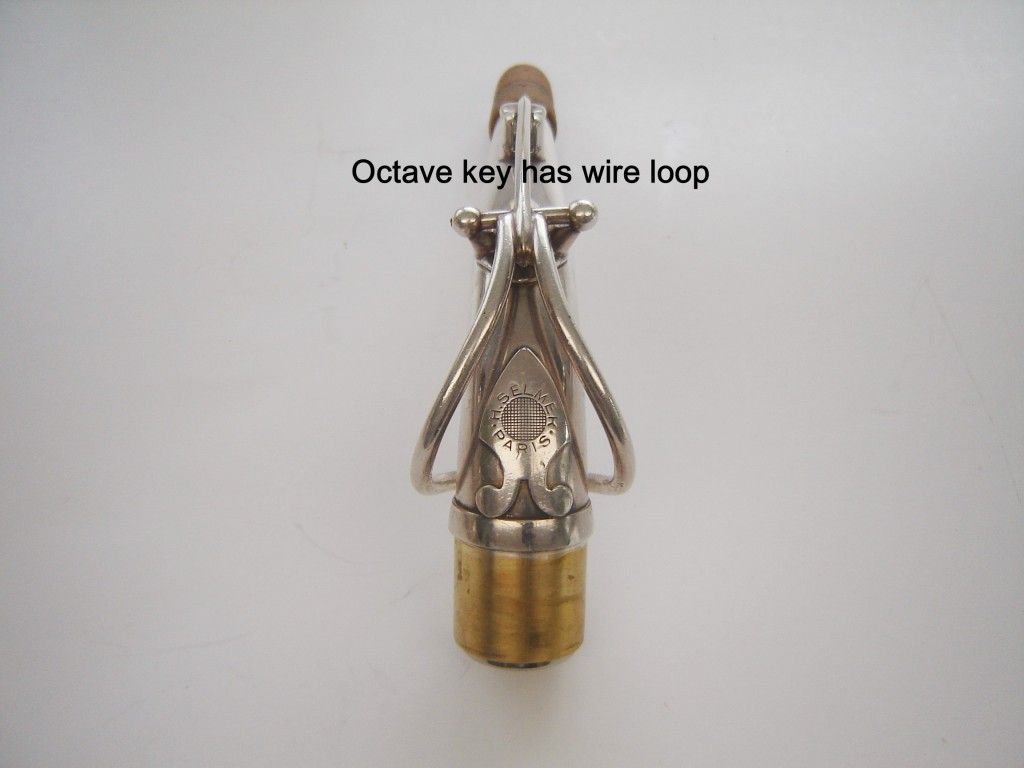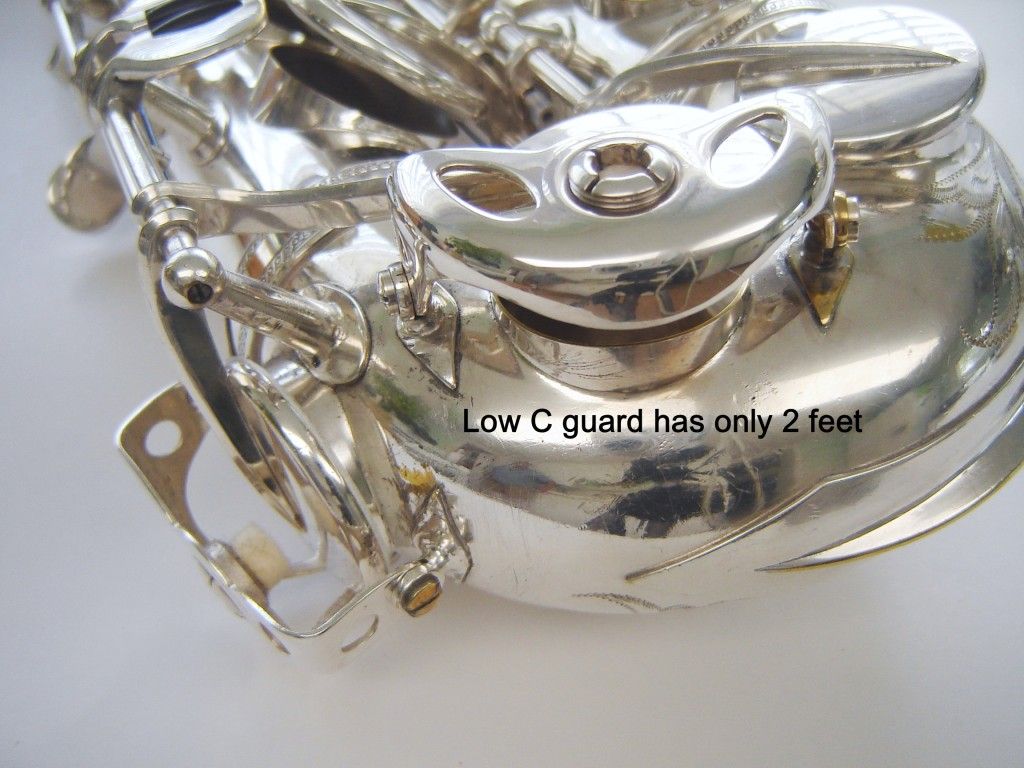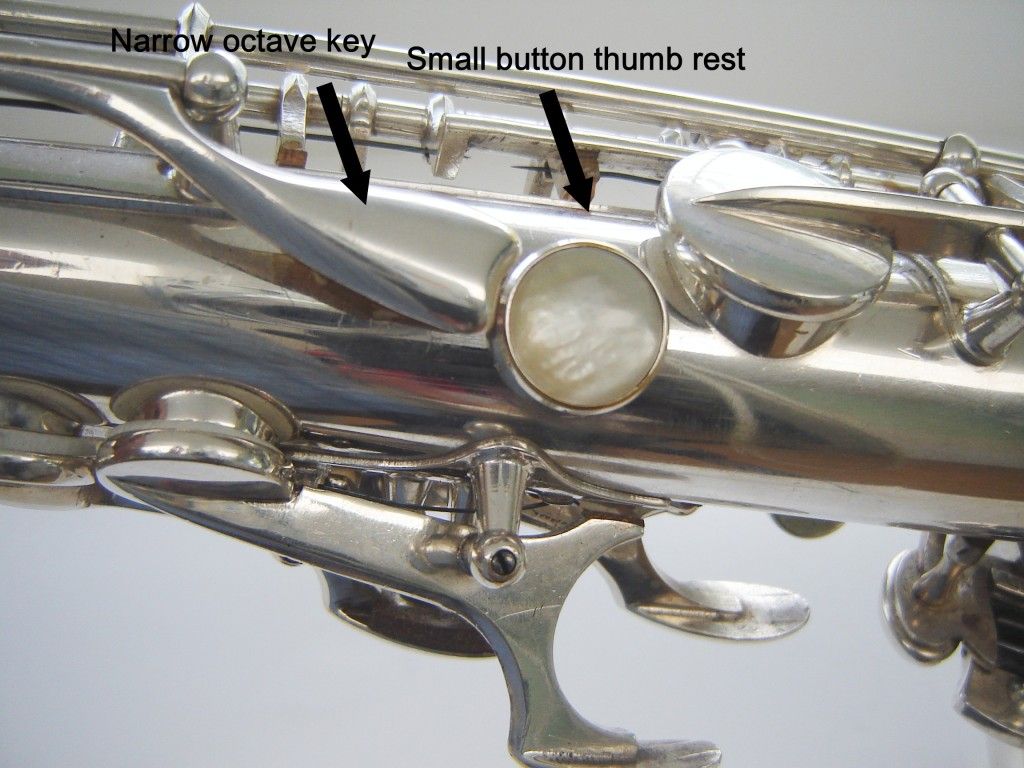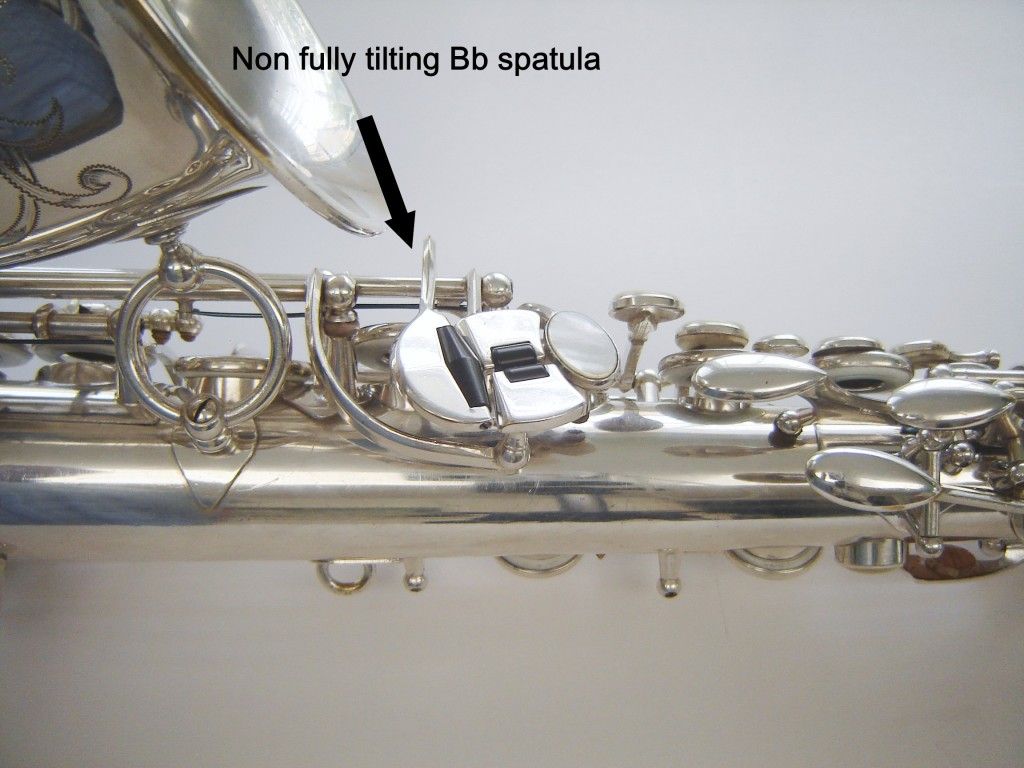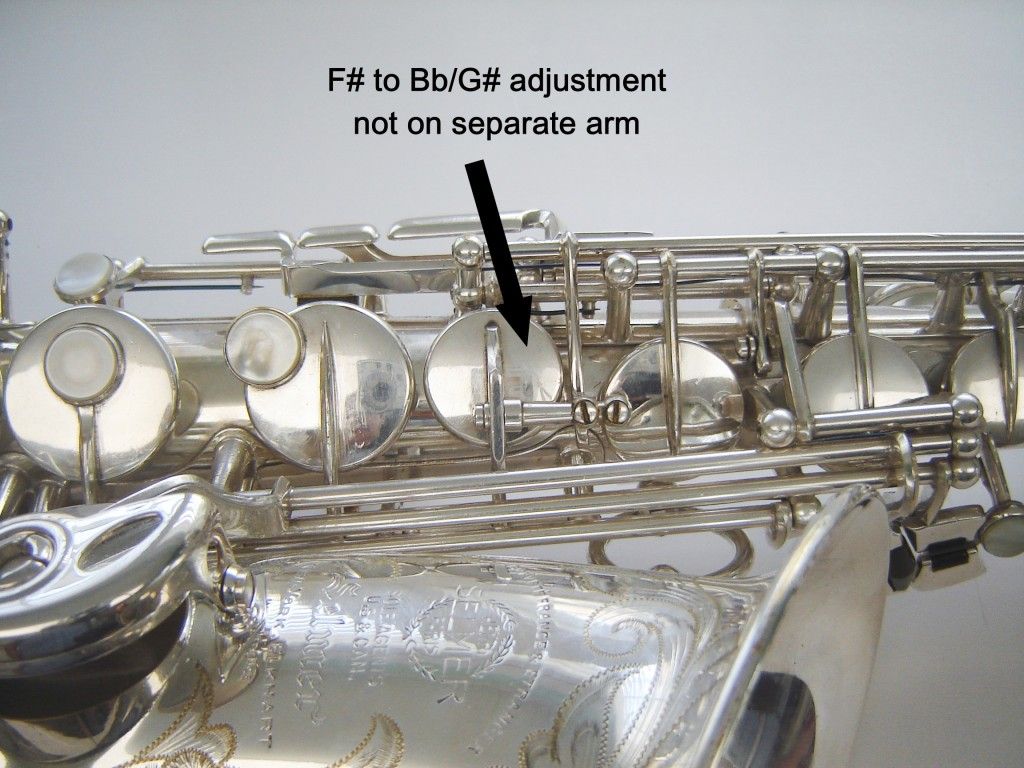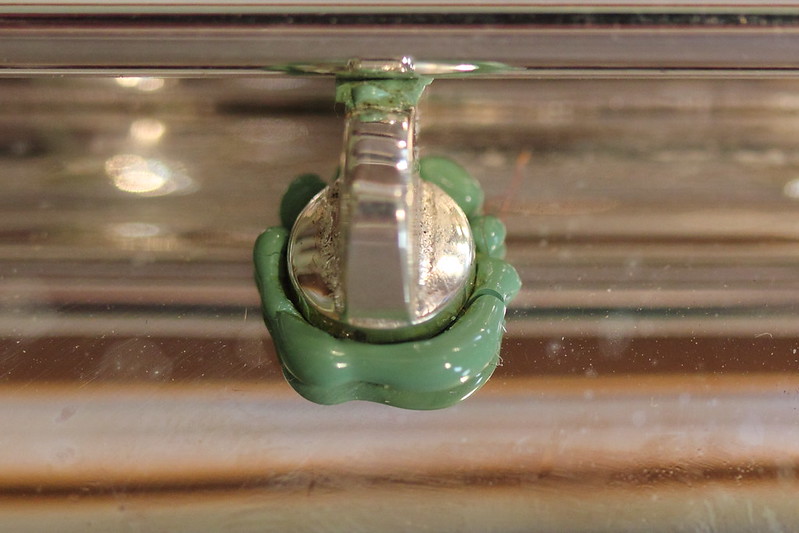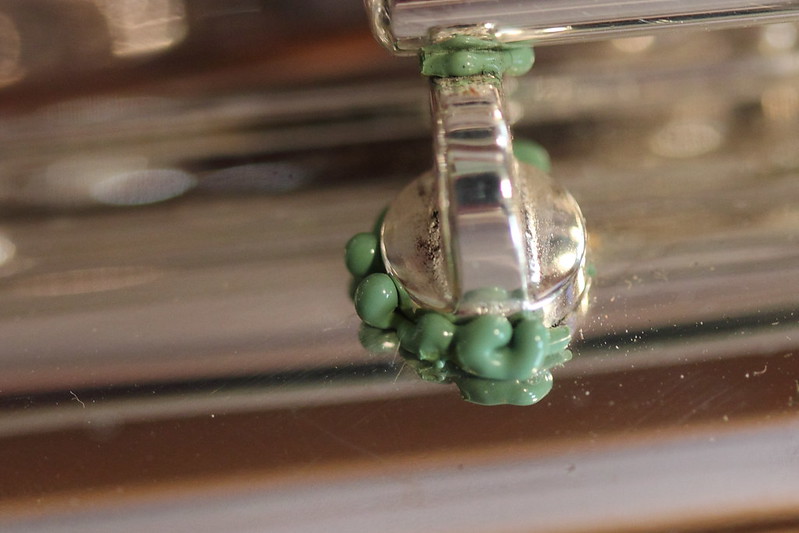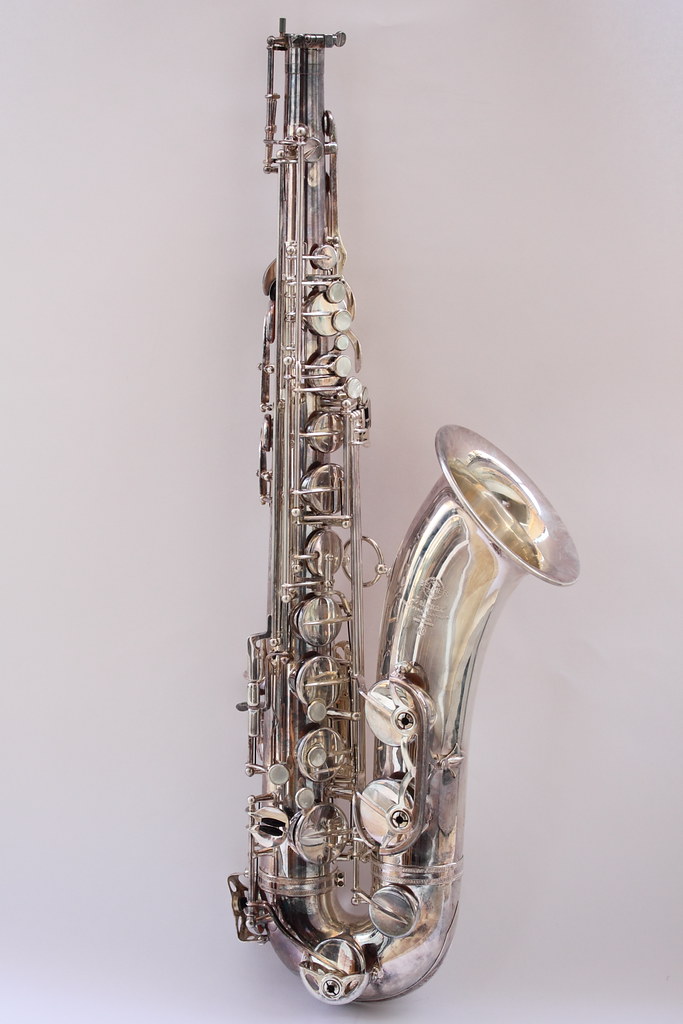Eye candy.
It's good to see one of these horns that doesn't have the enormous amount of wear that's normal for a 60 to 40 year old professionally used saxophone. My tenor is slightly older than this vintage and is in near mint condition ( I don't play much tenor) but is nowhere as fresh as this one. And it's easy to see the quality that Selmer built into the horns back then in this pristine example.
A friend of mine is playing an early mk6 tenor that he's owned for about 40 years. He's a professional player who gigs just about everyday. He's in the process of locating a thumb octave lever....he's just about worn through his, it's wafer thin where his thumb presses on it! Another friend, who's owned his mk6 tenor since it was new back in '56 has just put his horn in the shop for replacement of the pearls and the cups they're set in. This has to be the third or fourth set he's had to replace in the 40 or so years that I've known him. I replaced pearls and cups on a mk6 alto I bought new in 1974. I played on that horn A LOT! The cups wore so thin that the pearls, being set in without glue, fell out and I was playing on what was left of the cups alone. But the horn itself still played great. So this is a pretty common repair for very high mileage saxophones.
I think that's one of the main reasons why so many professional players still play the mk6. They seem to be overbuilt to the extent that they hold up to years and years of constant use.
Julian
It's good to see one of these horns that doesn't have the enormous amount of wear that's normal for a 60 to 40 year old professionally used saxophone. My tenor is slightly older than this vintage and is in near mint condition ( I don't play much tenor) but is nowhere as fresh as this one. And it's easy to see the quality that Selmer built into the horns back then in this pristine example.
A friend of mine is playing an early mk6 tenor that he's owned for about 40 years. He's a professional player who gigs just about everyday. He's in the process of locating a thumb octave lever....he's just about worn through his, it's wafer thin where his thumb presses on it! Another friend, who's owned his mk6 tenor since it was new back in '56 has just put his horn in the shop for replacement of the pearls and the cups they're set in. This has to be the third or fourth set he's had to replace in the 40 or so years that I've known him. I replaced pearls and cups on a mk6 alto I bought new in 1974. I played on that horn A LOT! The cups wore so thin that the pearls, being set in without glue, fell out and I was playing on what was left of the cups alone. But the horn itself still played great. So this is a pretty common repair for very high mileage saxophones.
I think that's one of the main reasons why so many professional players still play the mk6. They seem to be overbuilt to the extent that they hold up to years and years of constant use.
Julian

